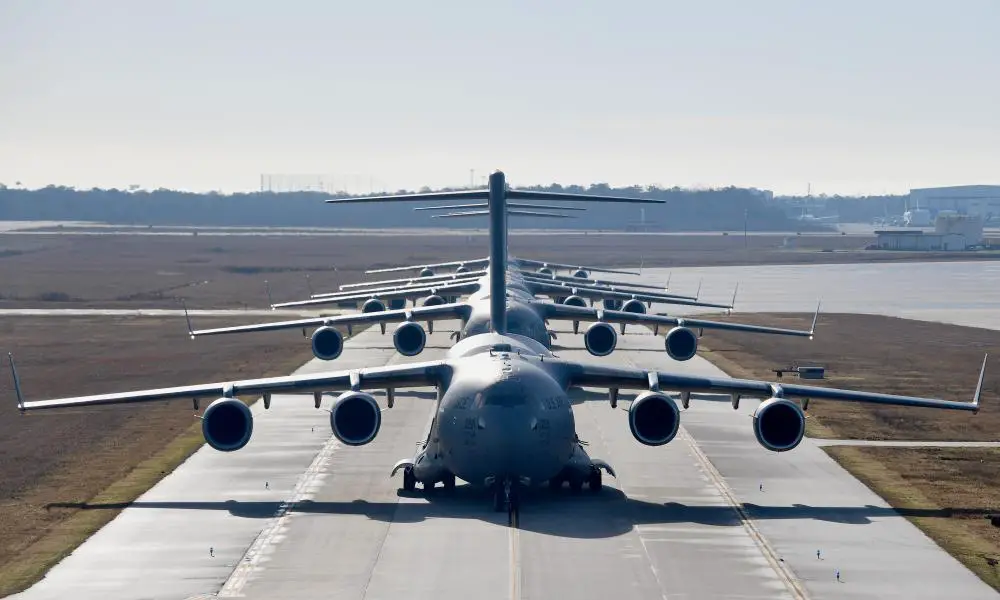Joint Base Charleston launched 24 C-17 Globemaster IIIs to conduct a mission generation exercise that integrated Air Force, Army, and Marine forces across five operating locations, January 5, 2023. This exercise marked the largest C-17 launch ever from a single base and demonstrated the wing’s ability to rapidly generate and project overwhelming AirPower alongside joint partners. The C-17s kicked off the exercise with a show-of-force flight over the Ravenel Bridge in Charleston Harbor and then dispersed to sharpen four core capabilities: command-and-control, navigation, tempo, and logistics under fire. More than 20 red- and blue-air F-16 Fighting Falcons from Shaw Air Force Base, S.C., and McEntire Air National Guard Base, S.C., fought for air superiority while the joint forces leveraged rapid mobility to establish a simulated missile defense system.

“We have to fight to get to the fight. This exercise tests our ability to accomplish the mission, while geographically dispersed and with limited communications,” said Col. Robert Lankford, 437th Airlift Wing commander.
“Air Mobility Command is the meaningful maneuver for the joint force, and our asymmetric advantage is our adaptable, talented Airmen. Every day we are learning new lessons that we want to apply in combat, so this mission generation exercise is a chance to test our capabilities,” said Maj. Gen. Corey Martin, 18th Air Force commander.
“This exercise is about readiness and lethality. We wanted to get as many aircraft as possible off. the deck in a 48-hour timespan, to tell pacing threats that we can go anywhere, anytime,” said Maj. Zachary Barry, C-17 pilot and lead planner for the exercise.

To better define and expand on agile combat employment concepts, aircrews practiced flexible deterrent and response options, like the ability to land in austere environments and quickly accomplish the mission at each location. The first C-17s landed at Pope Army Airfield, N.C., where Airmen worked alongside a Join Communications Support Element to establish a tactical operations center. The TOC provided secure communication and decentralized command structures to enhance critical decision superiority and prevent disruption. Other C-17s that also landed at Pope AAF picked up special tactics Airmen, took off, and flew to nearby Holland drop zone where the Airmen accomplished a static line jump. Once on the ground, they secured the dirt landing strip for follow-on operations.

At Marine Corps Air Station Cherry Point, N.C., C-17 aircrews landed, quickly uploaded HIMARS rocket launchers, flew to Pope AAF, and then performed a HIMARS rapid infiltration, or HIRAIN. The C-17s that landed at Marine Corps Air Station Beaufort, S.C., executed an integrated combat turn to quickly refuel U.S. Army AH-64 Apache helicopters. At Hunter Army Airfield, Georgia, aircrews focused on logistics under fire. Aircrews leveraged multi-capable concepts to maneuver cargo, which means they exercised skills that are outside of their primary duties to accomplish the mission. During the exercise, nearly 60 aircraft – to include an E-3 Sentry and KC 135 Stratotankers – were in the air, synchronizing capabilities to maximize lethality. Airmen also experimented with C2 equipment that will provide information for aircrews, to increase their battlespace awareness in a contested environment.















